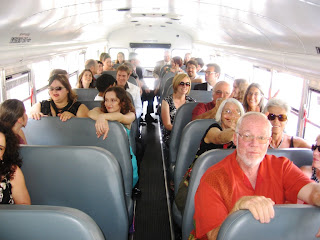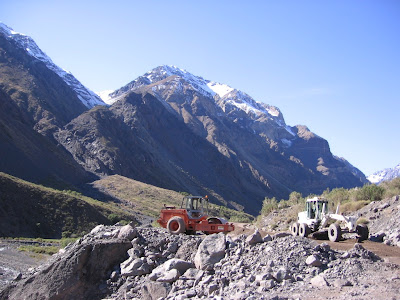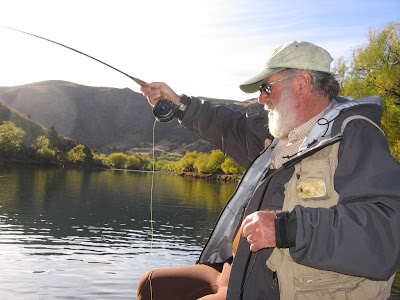Que bueno estar en Santiago; que bueno estar in USA; que fome hacer el vuelo--18 horas puerta a puerta—entre los dos. Pero valía la pena; mi último hijo soltero iba a casarse. (It’s great to be in Santiago; it’s great to be in the US; it’s a bore to make the flight--18 hours door to door—between the two. But it was worth the effort; my remaining single offspring was getting married.)
El año pasado fuimos a California para la boda de Celina, mi hija, y ahora fuimos a Madison, Wisconsin (2-3 horas al noroeste de Chicago) hogar de Laura Wanek la novia de mi hijo Andy. (Last year we went to California for my daughter Celina’s Redding and this year we were going to Madison, Wisconsin (2-3 hours NW of Chicago) the home of Laura Wanek, Andy’s Bride.)
Cuando llegamos al hotel, habían llegado los Californios: su tío Rick, hermano de su mamá, a la derecha de Alejandra; Celina, mi hija; su mamá, Kris; y su tío Jon, sentado. Andy es el flaco alto. (When we arrived at the hotel the Californians had already arrived: his Uncle Rick, brother of his mother, to Alejandra’s right; my daughter Celina, her mother Kris; and Uncle Jon, seated. Andy is the tall thin one.)
El ensayo estuvo en frente del capitolio del estado de Wisconsin, a dos cuadras de nuestro hotel. (The rehearsal was in front of the Wisconsin state capitol, two bocks from our hotel.)
Después fuimos a la cena del ensayo, una tradición Americana donde las dos familias y amigos comparten una cena la noche antes de la boda. (Then we went to the rehearsal dinner, an American tradition where the two families and friends usually share a meal the evening before the wedding.)
Steve, el marido de Celina, pidio el pollo. (Steve, Celina’s husband, had the chicken.)
.
En la mañana, fuimos a la feria que tienen cada sábado del verano en la plaza del capitolio. (The next morning we went to the farmer’s market, held every Saturday of the summer in the capitol plaza.)
En la mañana, fuimos a la feria que tienen cada sábado del verano en la plaza del capitolio. (The next morning we went to the farmer’s market, held every Saturday of the summer in the capitol plaza.)

.

Después, en micro a la boda--para que nadie tuviera que eligir entre tomar y manejar. (Then on the bus to the wedding--so no one would have to choose between drinking and driving).
.
.
Llegamos: a la izquierda, Steve, Celina y Kris; abajo Andy, los abuelos de Laura y su papá, Greg. (We arrive: to the left, Steve, Celina and Kris; below Andy, Laura’s grandparents, and her father, Greg.)
.
Esperando la novia: el oficiante y amigo de Andy, Joel, Andy y Celina, la
Madrina de la boda. (Waiting for the Bride: Joel, the officiant and Andy’s friend, Andy, and Celina, the “Best Person.”)
 Llega, y esta hecho. (She arrives, and it’s done.)
Llega, y esta hecho. (She arrives, and it’s done.)
 Llega, y esta hecho. (She arrives, and it’s done.)
Llega, y esta hecho. (She arrives, and it’s done.)Llegan los mariachis… (the mariachis arrive…)
Y los novios bailan. (And the newlyweds dance.)
Fotos con los padres orgullosos. (Photos with the proud parents.)
.
Y la cena; aquí estamos con mis amigos de la Universidad, Harry y Debora Berman, y Steve. (And the dinner; here we are with my friends from the University, Harry y Debora Berman, and Celina’s husband Steve.)
**************
Desde Madison, fuimos a Springfield, donde visitamos la State Fair, (From Madison we went to
.

…conocimos la Dana House, diseñado por Frank Loyd Wright, y fui a los médicos para mis check-ups. (…we visited the Dana house build by Frank Loyd Wright, and I went to the doctors for my check-ups.)
.
Y después, a Chicago. Pero hay que comer en el camino; el famoso bagre frito del Midwest. (And then to
En Chicago tuvimos a irnos al Field Museum de historia natural para ver a Sue, la T. rex más famosa del mundo. (In Chicago
Y al jardín botánico, con Pepa, la amiga Chilena de Alejandra quien vive en Chicago con su esposo gringo, Peter. (And to the botanical garden with Pepa, Alejandra’s Chilean friend who lives in
.





























































